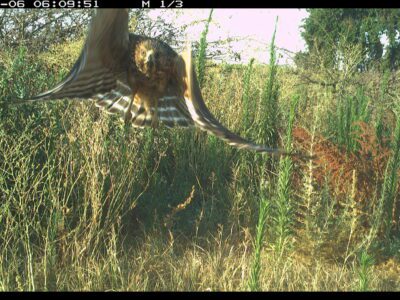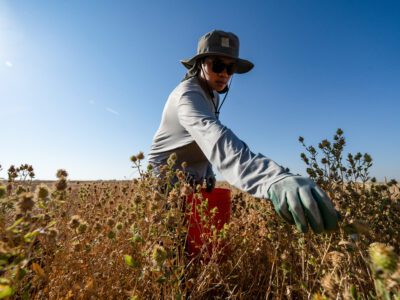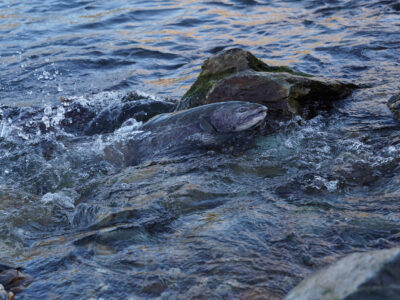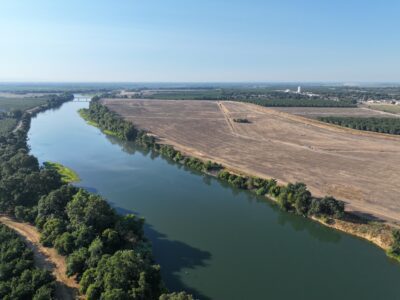Right now tiny salmon are emerging from the gravels at the bottom of the Sacramento River. Thanks to all of the rain, the river is swollen and quick, and the beginning of their migration out to the Golden Gate is on a fast track. In fact, the river is so full that it is spilling over its banks in many locations, and those tiny fish are suddenly finding themselves in a strange new place: out on the floodplain. And it feels like home.
One of these floodplain locations is our 175-acre habitat preserve known as Willow Bend, which has flooded four times this season alone. This is the site where I first found juvenile salmon three years ago.
Here, River Partners and our partners have launched a demonstration project that shows scalable promise for recovering native salmon-rearing habitat throughout the Central Valley. This project is funded by the NOAA Restoration Center and the Volgenau Foundation.
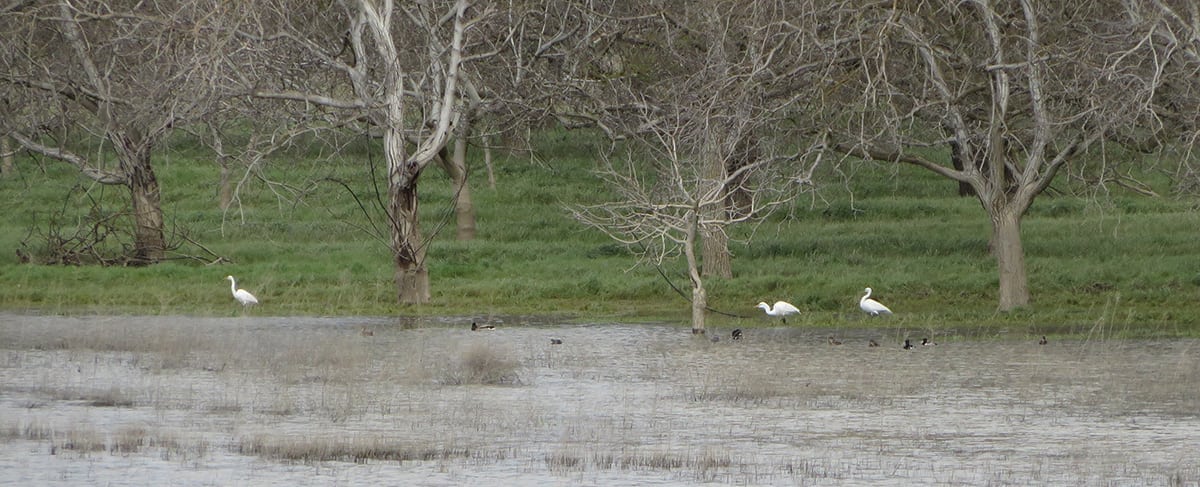
I was in waders and surveying the native bunch grasses – which are perennial and long lived – to see how they were surviving after being submerged for weeks. The north field of Willow Bend is bowl-shaped, and after the river crests, the site becomes a lake until the water that spilled into the bowl percolates or evaporates, which can take months.
As I waded across the field I kept noticing minnows darting in the water. I wondered what species they were.
After my grass survey was done, I waded back toward shore, and when I was in just inches of water I noticed a dead minnow. It was still brightly colored, so it couldn’t have been dead for long. On a hunch, I carried it to the car and placed it in my water bottle.
Back in Chico, I swung by the office of one of our fish expert partners, FishBIO and showed the minnow to two fisheries ecologists. One of them dipped a plastic spoon into my water bottle and grabbed the fish. The moment it broke the surface both of the biologists yelled one word at the same time: “Salmon!”
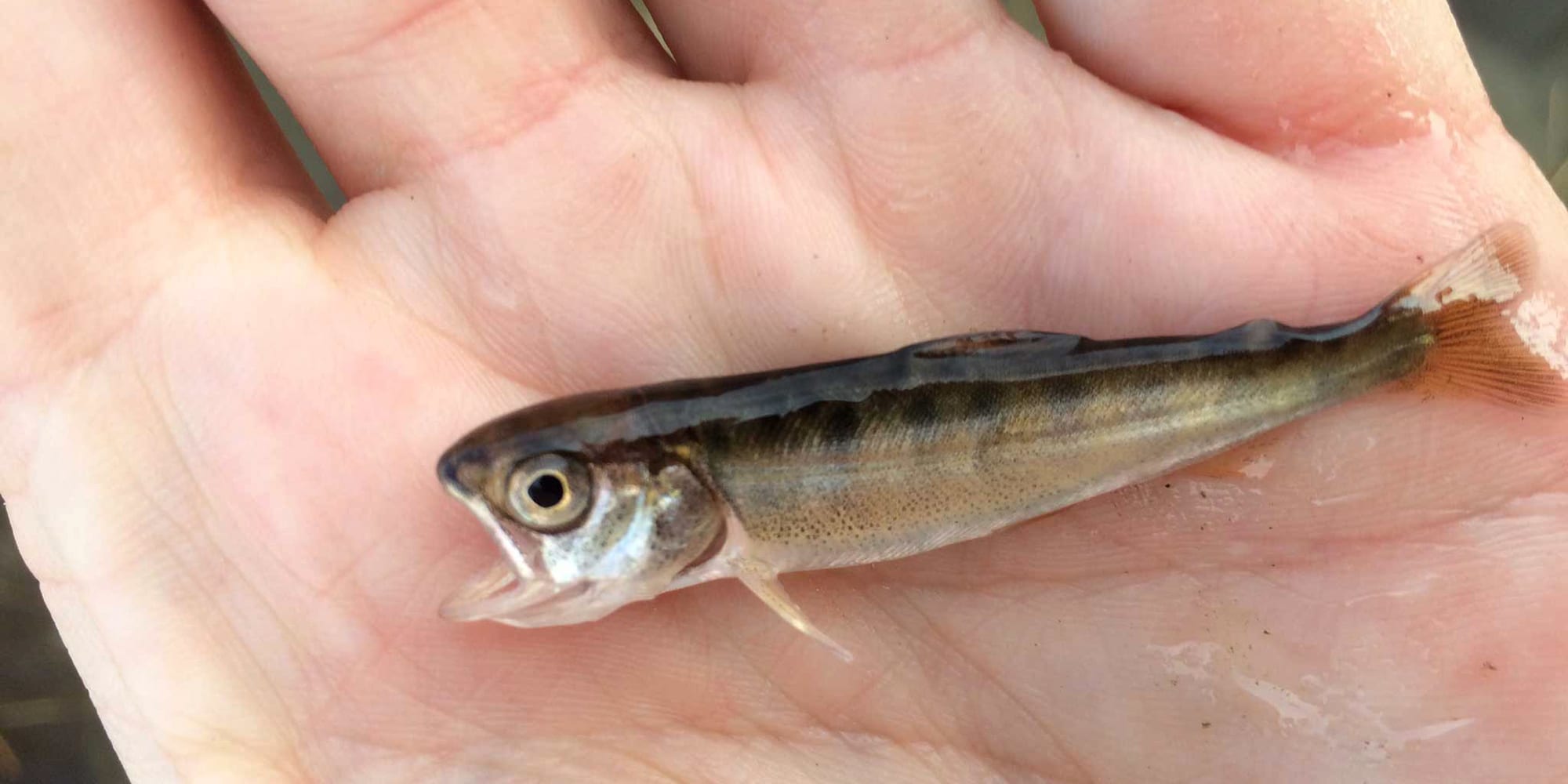
This 2-inch long fish was a fall-run Chinook salmon. They pulled up dozens of photos and taught me how to identify young salmon in case I saw any more in the field. I’d seen dozens of minnows in the water, all about the same size and shape. Could they all have been salmon? And if I saw dozens while I was just walking around, how many did the 40-acre pond hold?
Over the next couple of weeks, as the pond water level went down, I found 18 more dead “minnows”. All 18 were salmon.
Then another storm came. The site flooded again. This time we put out cameras to figure out exactly when flooding occurs. We compared the video with nearby river gages, and then when back and checked the historical flow data. It turned out that the site had flooded in thirteen of the past fifteen winters.
These juvenile salmon trapped in the lake at Willow Bend were acting exactly the way the salmon experts would expect them to. When rivers rise, juvenile salmon get pushed around and end up on the river edges, disproportionately close to the surface of the rushing floodwaters. Then, when the river jumps its banks, the fish get washed onto the floodplain.
Years ago, this was a great thing. The food web on floodplains – if you’re a young salmon – is an all-you-can-eat buffet. As the water warms, it becomes thick with tiny plants and animals on which the young salmon gorge. Many studies (including one led by River Partners) have shown that salmon grow far faster on the floodplain than they do in the river.

Food studies conducted at Willow Bend have found that one gallon of floodplain water holds 160 times the salmon food that is in the river. In perspective, the 40-acre pond has as much food as ten miles of river
The single biggest factor that predicts a salmon’s fate once it reaches the ocean is how big that salmon is. If they get fat on the floodplain on their trip to the sea, then they are more likely to survive. Which means more adults make it back to their home streams to spawn.
At least that is how it used to work.
Now, because of dams, diversions, and revetment, some floodplains have become hazardous to salmon. At Willow Bend, for example, those cameras we mounted to capture the flooding were right along the river’s edge. But we knew they were safe, that the bank wouldn’t erode in the flood because that bank is armored with rock revetment. Like many miles of the Sacramento River, this bank was armored decades ago to keep the river from meandering onto the farm. As the water – and the salmon – spill over that revetment it erodes the ground behind the armor, creating the lake that is disconnected from the river once the river stage drops.
The salmon were out on the floodplain getting fat, just as their genetics programmed them to do. The bad news is that they were trapped.
Because of the way our rivers are managed, there are other “Willow Bends” – prime salmon-rearing habitat in temporary floodplain lakes – everywhere you look.
Farmers had a fairly straight-forward fix. Temporary floodplain lakes were drained back to the river. The way it would work at Willow Bend is that a channel would be bulldozed from the low point in the field to the river. It would need to be armored where it meets the river to keep it from filling in or eroding. And the problem would be solved.
But we want more than just to solve the stranding problem. We also want the salmon to be able to get fat on the floodplain at Willow Bend. This means that it needs to stay flooded for at least three weeks at a time in order to give those little salmon time to gorge and grow.
We have been working with the Irrigation Training & Research Center at Cal Poly to develop an innovative gate design to help make this project happen. Through several meetings with engineers from the National Marine Fisheries Service we now have a working model that not only meets all fish passage criteria, but also retains water long enough so that these juvenile fish can get the maximum benefit from their time on the floodplain. As a bonus, it requires no power and little annual maintenance.
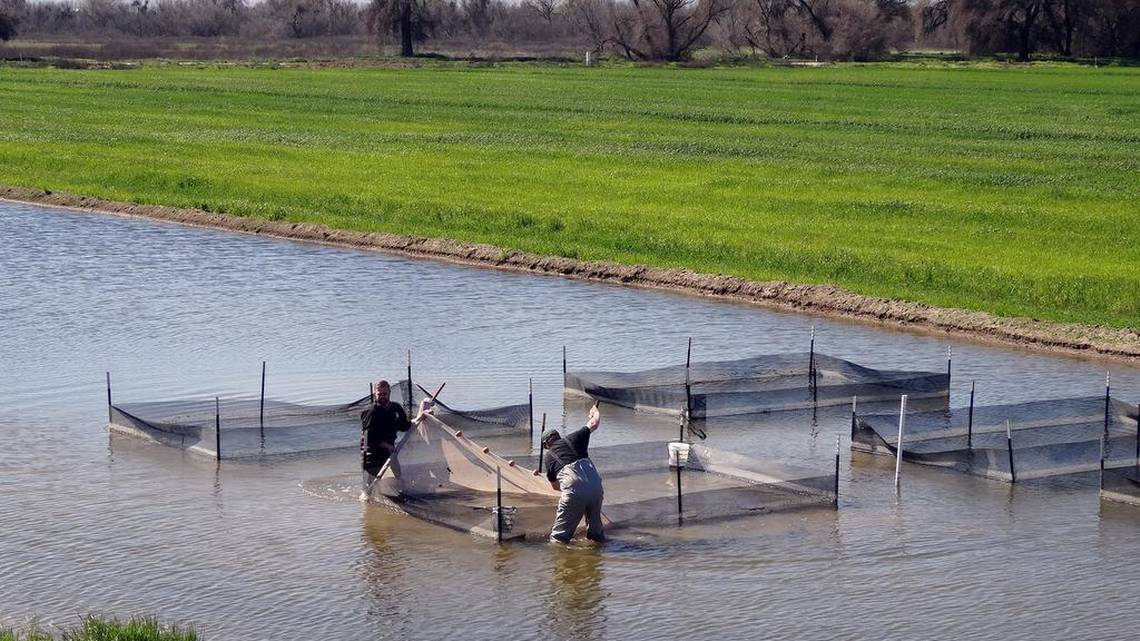
The Central Valley Salmon Habitat Partnership – a consortium of fish experts and agencies – have adopted Willow Bend as a model pilot project in their 2019 Action Plan. Colusa County has agreed to be the lead agency for CEQA permitting, which will be a key step toward implementing the project this year.
Our pilot project at Willow Bend offers a scalable, nature-based solution to expanding salmon rearing habitat throughout the Central Valley. As all of our partners help us shepherd this project through the necessary required permits, we are hopeful we are able to install the gate in time for next winter’s storms.

